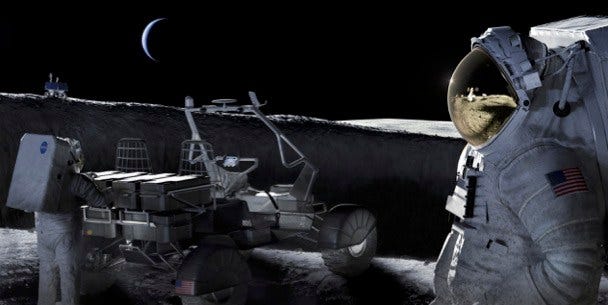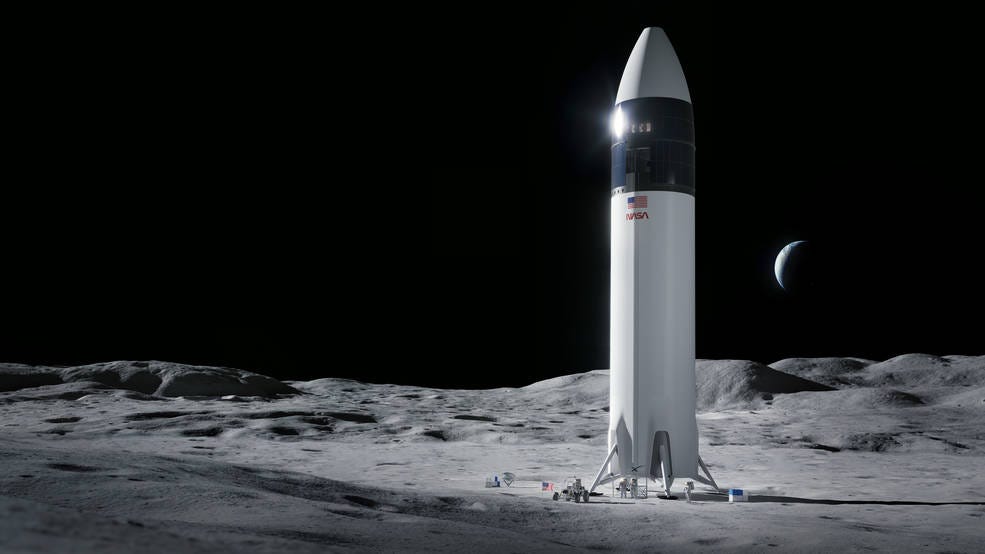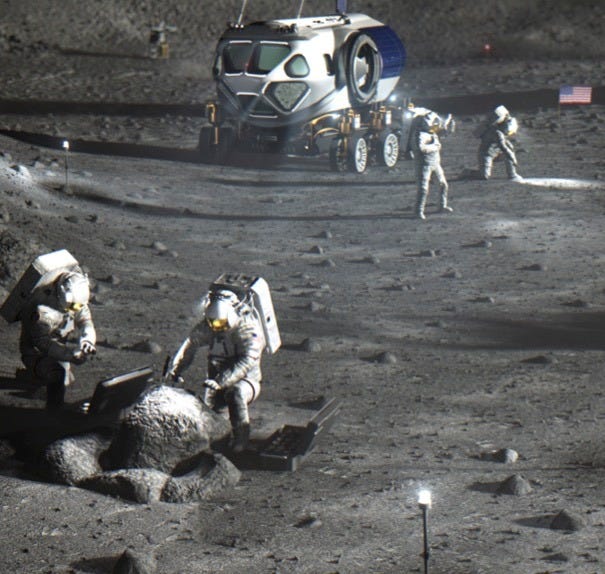The New National Security Space Race is On
The challenger this time is China. The prize is Mars.

It's FREE! Take a moment to subscribe to Full Throttle which will be sent to your email inbox twice a week. I update during the week on Facebook, Instagram, Twitter, and LinkedIn.
November 17, 2021
The headlines this week blasted the news of Russia hitting one of its old satellites with a weapon. The blast created 1,500 pieces of space junk that threatened the International Space Station and its two Russian cosmonauts and five astronauts. The US complained. The Russians fired back that the US is testing military spacecraft.
The US, China, and India have conducted similar anti-satellite tests leaving plenty of junk in their wake (Secure World Foundation tracks this issue).
NASA Animation of growing space debris over past decades (Credit: NASA)
Military and space tensions, with Russia are never good. But there were other headlines a week earlier which may prove to be more important in the long run.
NEW SPACE "COMPETITION"
It is new space race with the gauntlet thrown down by the Biden administration. The NASA Administrator, Sen. Bill Nelson, clearly, and forcefully, laid out that the US is in the midst of this new, and challenging space race, with a, “very aggressive competitor.” It is not the Russians, but rather the Chinese. The prize is being the first onto the moon as a step to put the first humans on Mars.
NASA Administrator Bill Nelson talking about the US competitor in space during a briefing with reporters. (Credit: NASA)
Bill Nelson’s declaration came during a NASA briefing to admit what many already knew; the US won’t be back on the moon in 2024 as the Trump administration projected. It will be 2025 at the earliest. Nelson was also making a pitch that Congress will need to give NASA a lot more money to meet the challenge he sees in the coming years for this space race.
MOON PRICE ESCALATES
He also announced that Artemis, the current effort to go to the moon, is going to cost billions more. The cost of the capsule alone is jumping more than 35% (NASA’s Inspector General just released a new report suggesting a moon landing is likely to be delayed several more years at a cost now of $91 billion).

Chinese Taikonaut on a recent spacewalk outside the Chinese space station. (Credit: Xwinhau Net)
“Statements that the Chinese space program, which includes the Chinese military have made, give us indications that they are going to be very aggressive,’ Nelson told reporters. It’s the pace of Chinese accomplishments in space that appears to worry the Administrator.
Those include:
-Building a space station.
-Occupying that space station.
-Landing a rover on Mars, the second nation (after the US) to do so.
-Planning a sample return mission from Mars.
-Planning to land near the South Pole of the moon.

Chinese space station during visit by Taikonauts. (Credit: Xinhua Net)
“It's the position of NASA and I believe the United States government that we want to be there, first back on the moon, after over a half century,” Nelson declared on the call with reporters. But the moon is only the stepping stone. Mars is the goal. “We're going back to the moon to learn what we need to do to extend human life for long durations and build habitats with the whole idea that we are going with humans late in the 2030s to Mars. There's a lot to learn,” he said.
PATRIOTIC CHALLENGE
Not only a lot to learn, but a lot to build too. The Deputy Administrator and former astronaut, Col. Pam Melroy, admitted as much saying, “ this is one of the great undertakings of humanity.” Work she said that is staggering but then added, “we’re Nasa and we will rise to the challenge.”
Former Shuttle Commander and Deputy Administrator Pam Melroy on the challenge for NASA getting back to the moon. (Credit: NASA)
The slip of a moon landing to at least 2025 or later was expected. There have been problems with the capsule, the rocket, new space spacesuits, and there is no lunar lander. NASA, which usually awards two competitors a contract to compete on these types of projects, picked only SpaceX’s Starship to carry astronauts to the lunar surface.

Illustration of SpaceX Starship on the moon. (Credit: NASA)
FUTURE COMPETITIVE BIDS
NASA claimed it didn’t have enough money to fund two lander contracts. “Previous Congresses did not appropriate enough dollars for the development of the human landing system and then the Trump administration target of 2024 human landing was not grounded in technical feasibility,” the administrator said. Members of Congress who represent states where some competitors reside want NASA to make future contracts competitive. Washington State Senator Maria Cantwell has been vocal. Jeff Bezos’ Blue Origin is based in her state. Blue Origin not only lost the lander contract, it lost an appeal as well.
The Congressional demand, along with outlining the Chinese threat, has NASA asking for more money. Cynics might suggest defining a new space race is a way to sell larger budget requests. National Security issues did propel the first space race with the Soviet Union.
Administrator Nelson on budget needs for the new space race. (Credit: NASA)
The agency says it’s changed its executive structure, contracting practices, will streamline the moon rocket, and has thrown in the towel on making new spacesuits on its own. NASA is now asking the private sector to build the suits and service them. All this, the agency says, will prepare NASA for this space race.
That is NASA’s pitch to Congress and the American public. The administrator says, “We are going to be as aggressive as we can be, in a safe and technically feasible way, to beat our competitors with boots on the moon.”

Illustration on Artemis moon base. (Credit: NASA)
(Cover photo credit: NASA)




